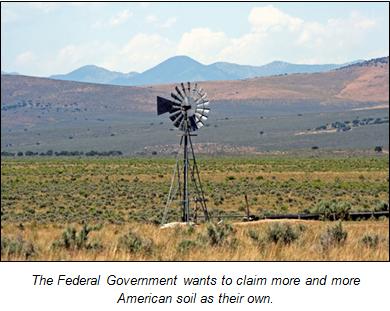By Michael Swartz

In recent times, the usage of Antiquities’ declarative power has been almost strictly a Democratic practice – by comparison, neither Ronald Reagan nor George H.W. Bush used the Antiquities Act in this manner during their terms and President George W. Bush did but twice. President Clinton established a total of 19 national monuments, mainly as he was preparing to leave office in 2001.
But a recently leaked internal memo from the Department of the Interior (DOI) detailing thirteen new prospective national monuments may show that President Obama is interested in continuing the recent liberal environmentalist practice of locking resource-rich lands away from development. In fact, this very reason is cited in the memo to preserve Colorado’s Vermillion Basin, a “unique high desert basin (which) is currently under threat of oil and gas development, which would forever alter the region.” Other areas are cited as “critical long-term movement corridors for…wildlife” or “pristine desert wilderness landscapes.”
Once word got out about the proposed land grab the DOI backtracked, calling the memo a product of a “brainstorming session.” But it shows the attitude that placing land off-limits to development and perhaps a higher and better usage is more important to some than the benefits the resources on or underneath the land may provide. The land hasn’t changed perceptively since the previous administration left the White House, but the bureaucrats who have been itching to turn the West back into the wilderness it once was by creating “migration corridors” or placing areas out of reach for human interaction had to wait until they had an ally in the White House to again make their move.
Needless to say, a number of Congressional representatives from western states are unhappy. Their cause was led by Rep. Rob Bishop of Utah, who is credited with making this DOI memo public.
Their biggest concern is the potential lost revenue for state and local governments, who already deal with the burden of hosting a huge percentage of federally-owned land within their borders. West of the Great Plains, the federal government owns at least 30 percent of the land mass in every state but Hawaii, with Nevada leading the way – the federal government owns over 4/5 of Silver State land. Aside from those twelve states, only three others have more than ten percent federally owned land with most of the rest checking in at five percent or less. Overall, Washington bureaucrats own about 30 percent of our total land mass but apparently would like to take millions more acres through Presidential mandate.
The DOI’s evaluation seemingly fails to ask how placing areas off-limits is going to affect job creation and local economies, and may not be considering the financial ramifications of taking care of the land once acquired. If areas have unique and wondrous features it’s doubtful that the public will want them to remain hidden from their view.
It seems the only thing hidden from public view is the process and perhaps that’s intentional, knowing the outcry from affected states and individual landowners would be deafening.
Michael Swartz, an architect and writer who lives in rural Maryland, is a Liberty Features Syndicated writer.

